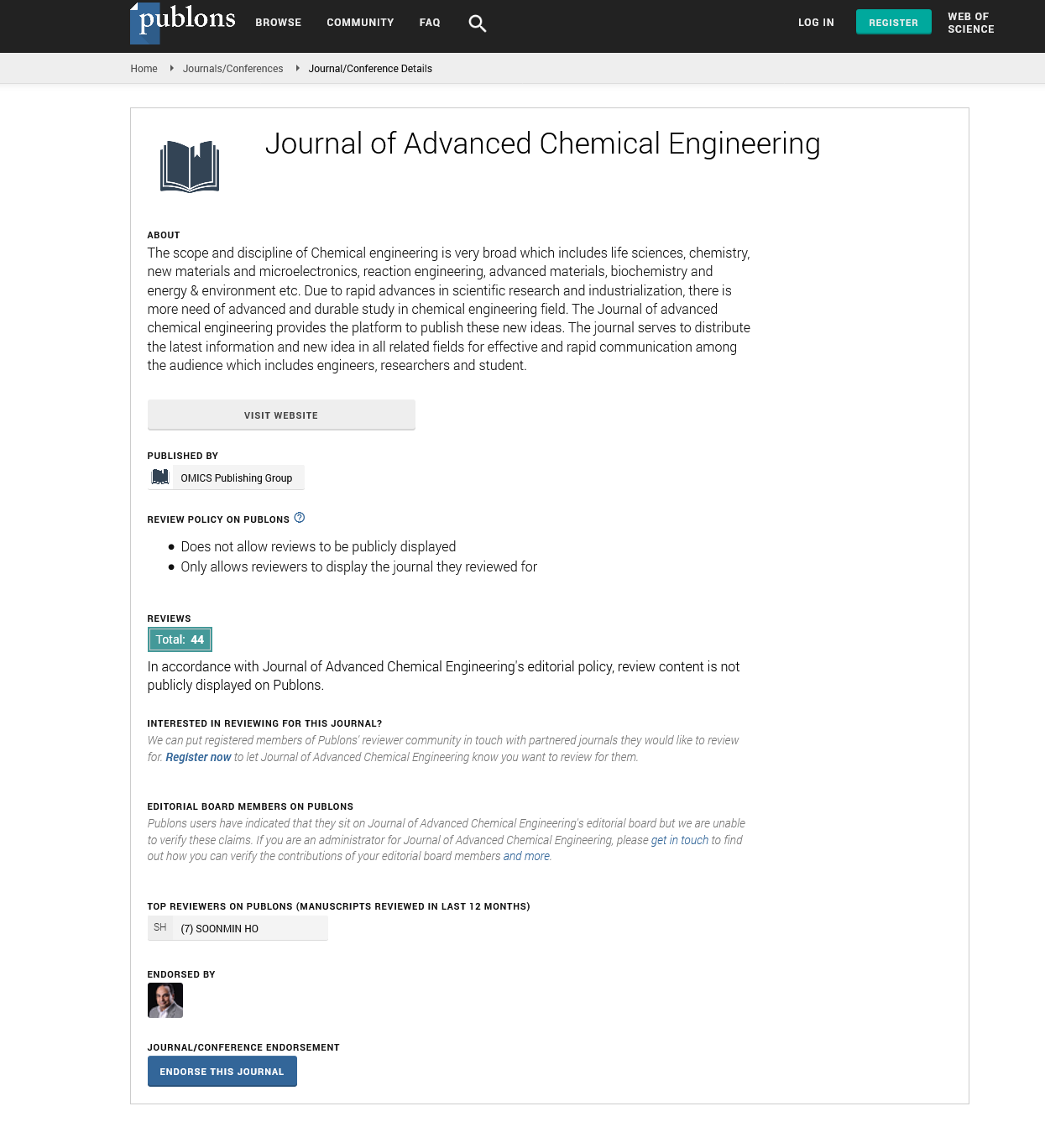Indexed In
- Open J Gate
- Genamics JournalSeek
- Smithers Rapra
- RefSeek
- Directory of Research Journal Indexing (DRJI)
- Hamdard University
- EBSCO A-Z
- OCLC- WorldCat
- Scholarsteer
- Publons
- Geneva Foundation for Medical Education and Research
- Google Scholar
Useful Links
Share This Page
Journal Flyer

Open Access Journals
- Agri and Aquaculture
- Biochemistry
- Bioinformatics & Systems Biology
- Business & Management
- Chemistry
- Clinical Sciences
- Engineering
- Food & Nutrition
- General Science
- Genetics & Molecular Biology
- Immunology & Microbiology
- Medical Sciences
- Neuroscience & Psychology
- Nursing & Health Care
- Pharmaceutical Sciences
Commentry - (2023) Volume 13, Issue 4
Optimizing Microanalysis with Post-Column Reactors in Capillary Chromatography
Sahlin Amy*Received: 19-Jul-2023, Manuscript No. ACE-23-22982; Editor assigned: 21-Jul-2023, Pre QC No. ACE-23-22982 (PQ); Reviewed: 07-Aug-2023, QC No. ACE-23-22982; Revised: 14-Aug-2023, Manuscript No. ACE-23-22982 (R); Published: 21-Aug-2023, DOI: 10.35248/2090-4568.23.13.303
Description
Chromatography can be coupled with chemical processes to increase the sensitivity or selectivity of a detection method. For instance, changing the sample component into a more detectorsensitive product can achieve the lower limit of detection. By enhancing the detector's selectivity, interference from compounds that chromatographic separation cannot sufficiently separate can be avoided. Chemical reactions can be carried out offline, online, or in pre-columns or post-columns. Pre-column formation is simple, yet it has the potential to alter the compound's chromatographic characteristics. Furthermore, precolumn derivatization artefacts are more likely to be produced since the reaction occurs in a sample matrix.
As a result, post-column derivatization is frequently chosen. By fractionally collecting the column eluate, adding a derivatization agent, and then measuring the reaction products, post-column chemical reactions can be carried out offline. Alternately, it can be done online, although this requires a flow reactor.
To increase the detector's sensitivity or selectivity, perform the post-column derivatization reaction. The advantages of capillary chromatography for microanalysis can be increased by having an appropriate post-column reactor for the micro chromatography system. However, because of the capillary column's tiny peak volume, post-column derivatization is difficult.
The following requirements must be fulfilled when using a flow reactor to create reaction products: Solvents and reagents must not obstruct detection; To prevent high peak broadening caused by big capacity reactors, the reaction kinetics must be rather quick; To attain a low detection limit, the reaction yield must be high; On the experimental time scale, the reaction product must be stable.
Post-column derivatization has been carried out in segmented flow reactors, packed bed reactors, and open tubular reactors. The design and functionality of these kinds of chemical reactors for chromatography have been discussed in a number of studies. The most popular type of reactor is an open tube reactor, which consists of a small tube through which a solution of effluent and reagent flows.
The additional peak widening that takes place inside the reactor itself is the main worry when using any form of post-column reactor. To minimize the inescapable loss in resolution, the additional peak widening in a post-column reactor should be kept to a minimum. Designing post-column reactors for use in micro-column HPLC columns is particularly challenging since these analyses are linked to small peak volumes.
The reaction between the column eluent and the derivatization reagent requires mixing of the two liquid streams. Fortunately, the to efforts centred on the microfluidic devices, research surrounding liquid mixing in micro channels has increased recently. As a result, creating hybrid designs that work with lithography-based micro-fabrication technologies has received a lot of attention.
The flow is characterised by a low Reynolds number (Re) value in these microfluidic tubes. When the fluid flow is consolidated into a single channel, microfluidic systems that require mixing often rely on diffusion mixing because the flow at low Re is dominated by viscous coupling to the wall.
A post-column derivatization approach based on in-lab developed Biuret chemistry must be used to evaluate the manufactured device. At moderate potentials, the peptide specifically binds to copper (II) via the amide backbone, enabling reversible electrochemical detection.
A copper (II)-peptide complex may form in front of the column, but that would change the peptide's retention time. This is why post-column derivatization is used the most frequently. Because large peaks call for longer mixing times, post-column flow reactors used in capillary chromatography systems differ from micro fabricated mixers frequently used in fast capillary electrophoresis. To reduce the impact of band spreading, the reactor's volume should be modest in comparison to the peak volume.
Conclusion
Chromatography coupled with chemical processes, such as postcolumn derivatization, is a powerful technique for enhancing sensitivity and selectivity in detection methods. This approach allows for the transformation of sample components into more detector-sensitive products, achieving lower limits of detection and reducing interference from co-eluting compounds. While both pre-column and post-column derivatization methods are available, post-column derivatization is often preferred due to its versatility and the avoidance of potential alterations to chromatographic characteristics. However, challenges arise when implementing post-column reactors, especially in micro-column High-Performance Liquid Chromatography (HPLC) systems, where small peak volumes require careful reactor design to minimize additional peak widening.
Citation: Amy S (2023) Optimizing Microanalysis with Post-Column Reactors in Capillary Chromatography. Adv Chem Eng. 13:303.
Copyright: © 2023 Amy S. This is an open-access article distributed under the terms of the Creative Commons Attribution License, which permits unrestricted use, distribution, and reproduction in any medium, provided the original author and source are credited.

